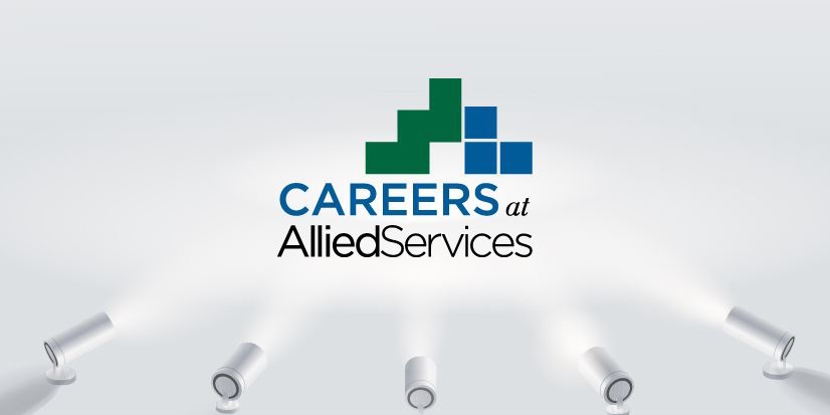Speech therapy and the benefits for stroke patients
- Category: Speech Therapy, Stroke Recovery
- Posted On:
- Written By: Allied Services Integrated Health

Speech-language pathologists (SLP) play an integral role in stroke recovery. Our work can be transformative, helping stroke patients recover their speech and with it, freedom of communication. Aphasia, dysarthria, apraxia of speech, and cognition impairments are commonly seen in people recovering from stroke, and can be assessed and treated by SLPs. Additionally, strokes can cause swallowing disorders that negatively impact quality of life. Here again, SLPs play an important role in assessing and treating stroke patients.
Restoring speech following stroke
Aphasia is a language impairment that can impact reading, writing, comprehension, and expression. Dysarthria and apraxia of speech are motor speech disorders: the result of a disconnect between the brain and speech mechanism. With dysarthria, the “plan” from the brain is correct, but the muscles can’t follow it due to weakness or incoordination, resulting in slurred or sluggish sounding speech. Apraxia of speech is the result of the brain's inability to create the “plan” to tell the muscles how to produce correct speech sounds. The muscles can follow the plan, but the plan is incorrect, resulting in difficulty producing the desired speech sounds to form the words they know they want to say. Every stroke patient presents differently, some experiencing one or more of these impairments while some may not experience any impairments requiring speech intervention.
Assessing and treating dysphagia
Dysphagia is a symptom of a medical condition, such as stroke, and refers to difficulty swallowing. The prevalence of dysphagia ranges from 50% to 80% in stroke patients. Addressing dysphagia is critical as it can lead to medical complications, nutrition and/or hydration issues, and a decrease in quality of life. The SLP is responsible for determining which diet texture a patient can safely tolerate considering the swallowing impairment and rehabilitating the swallow while minimizing risk of aspiration. Aspiration refers to food or liquid “going down the wrong pipe,” which we have all experienced at some point; however, repetitive occurrences are a concern for aspiration pneumonia, especially for those not in full health.
Gold standard in swallowing assessment
We cannot visualize the swallow after the food leaves the patient’s mouth; therefore, if a patient exhibits coughing or other signs of a pharyngeal impairment then a speech-language pathologist may conduct a videofluoroscopic swallow study. This is an an x-ray of the swallow. It is the gold standard for swallowing assessment and allows the SLP to evaluate the anatomy and physiology of the swallow to determine what is happening that is causing the patient to cough while eating or drinking, and create an individualized treatment plan.
Often, patients present with weakness within the region of the pharynx or delayed initiation of the swallow, where the food or liquid is propelled back into the pharynx before the swallow is triggered, causing that material to go “down the wrong pipe,” meaning into the airway rather than down the esophagus. Sometimes in these instances, a patient may temporarily be prescribed thickened liquids, as these travel slower than regular liquids and give the swallow a moment longer to trigger, decreasing aspiration risk, keeping the lungs clear and the patient safe. Dysphagia treatment can include diet modification, swallowing maneuvers to increase safety, and strength and coordination-based exercises to restore function.
Stimulating muscles for better swallowing
Today, many speech-language pathologists are certified in VitalStim, a neuromuscular electrical stimulation device that is FDA approved, non-invasive, and uses a controlled electrical current to help stimulate specific muscles responsible for swallowing. A dysphagia treatment session with application of VitalStim is ideally 60 minutes and includes various therapeutic exercises to target strengthening of specific musculature based on the swallowing impairments identified during the x-ray of the swallow. Surface electrodes are placed over specific swallowing muscles on the patient’s larynx and provide small electrical impulses to assist in contraction of the muscles, and over time, re-education of those muscles to restore the swallow.
About the Author: Amanda Petrosky, M.S., CCC-SLP, works with patients at Allied Services Scranton Rehab Hospital.
Stroke Recovery at Allied Services
Our inpatient and outpatient stroke rehab programs address physical, cognitive, behavioral, and socialization needs as well as identify and manage risk factors to help prevent future strokes. To learn more:
- Scranton: 570-348-1360
- Wilkes-Barre: 570-826-3900
- Learn about stroke recovery here



